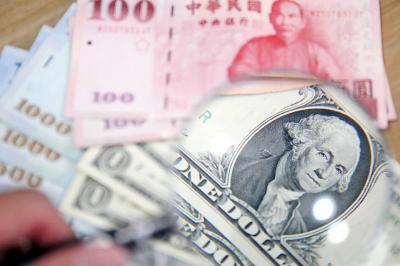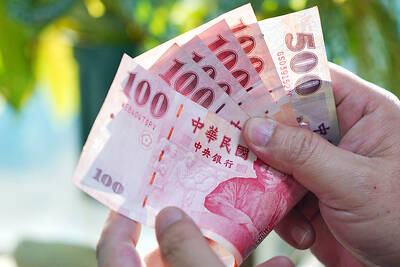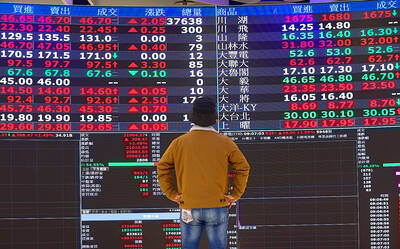China’s overseas investment in renewable energy projects jumped last year by 60 percent to a record US$32 billion, marking its leadership in the global market for clean energy, a report said on Friday.
Last year, China finalized 11 foreign deals worth more than US$1 billion each and is expected to pick up the pace this year, according to the Institute for Energy Economics and Financial Analysis (IEEFA).
On Thursday last week, China announced that it would sink at least US$361 billion into “renewable” energy resources by 2020, key to the country’s transition away from polluting coal power.
“Renewable energy will be the pillar for China’s energy structure transition,” Chinese National Energy Administration deputy head Li Yangzhe (李仰哲) said, Xinhua news agency reported.
Overseas investments last year ranged from lithium battery makers in Australia and Chile to an electricity distribution deal in Brazil and the building of a solar cell factory in Vietnam.
China now owns five of the six largest solar module manufacturing firms in the world, according to the report.
On the domestic front, the world’s second-largest economy had already emerged as a “renewables” powerhouse, outstripping the US.
China poured more than US$100 billion in domestic renewable energy — wind, solar, hydro — and related sectors in 2015, more than double the US investment, according Bloomberg New Energy Finance.
“The US is already slipping well behind China in the race to secure a larger share of the booming clean energy market,” IEEFA director Tim Buckley said in a statement. “With the incoming [US] administration talking up coal and gas, prospective domestic policy changes don’t bode well.”
US president-elect Donald Trump has vowed to restore the US’ flagging coal industry and has appointed several fossil fuel executives and lobbyists to key posts in his administration.
China’s emerging dominance of the clean energy sector also extends to jobs.
The International Energy Agency (IEA) estimates that China holds 3.5 million of the 8.1 million “renewable” energy jobs globally, compared with less than 800,000 in the US.
The Chinese National Energy Administration said the nation’s “renewables” sector would generate at least 13 million jobs by 2020.
Frankfurt School of Finance and Management professor Ulf Moslener said that China has emerged as “the world leader on renewable energy,” with clear advantages over rich-nation competitors, such as the US and Germany.
“Standard solar modules are no longer rocket science,” he said. “It will be really hard to compete with China on the cost side.”
The same applies to wind energy.
However, US and European entrepreneurs “should still have an advantage” when it comes to high tech, he added, pointing to thin-film solar and cutting-edge engineering services as examples.
Last year, China boosted its overseas influence by establishing the Asia Infrastructure Investment Bank.
It is also funneling billions of dollars into the New Development Bank, set up by the BRICS nations, Brazil, Russia, India, China and South Africa. All the bank’s initial loans were for “renewable” energy projects.
Add in its established overseas investment banks and “China is clearly building the financial capacity to drive global mergers and acquisitions,” the report said.
In 2015, China overtook the US as the largest market for electric vehicles and today two Chinese firms — BYD Auto Co Ltd (比亞迪汽車) and battery maker Contemporary Amperex Technology Ltd (寧德時代新能源) — are challenging Tesla Motors Inc for leadership of the sector.

The US dollar was trading at NT$29.7 at 10am today on the Taipei Foreign Exchange, as the New Taiwan dollar gained NT$1.364 from the previous close last week. The NT dollar continued to rise today, after surging 3.07 percent on Friday. After opening at NT$30.91, the NT dollar gained more than NT$1 in just 15 minutes, briefly passing the NT$30 mark. Before the US Department of the Treasury's semi-annual currency report came out, expectations that the NT dollar would keep rising were already building. The NT dollar on Friday closed at NT$31.064, up by NT$0.953 — a 3.07 percent single-day gain. Today,

‘SHORT TERM’: The local currency would likely remain strong in the near term, driven by anticipated US trade pressure, capital inflows and expectations of a US Fed rate cut The US dollar is expected to fall below NT$30 in the near term, as traders anticipate increased pressure from Washington for Taiwan to allow the New Taiwan dollar to appreciate, Cathay United Bank (國泰世華銀行) chief economist Lin Chi-chao (林啟超) said. Following a sharp drop in the greenback against the NT dollar on Friday, Lin told the Central News Agency that the local currency is likely to remain strong in the short term, driven in part by market psychology surrounding anticipated US policy pressure. On Friday, the US dollar fell NT$0.953, or 3.07 percent, closing at NT$31.064 — its lowest level since Jan.

The New Taiwan dollar and Taiwanese stocks surged on signs that trade tensions between the world’s top two economies might start easing and as US tech earnings boosted the outlook of the nation’s semiconductor exports. The NT dollar strengthened as much as 3.8 percent versus the US dollar to 30.815, the biggest intraday gain since January 2011, closing at NT$31.064. The benchmark TAIEX jumped 2.73 percent to outperform the region’s equity gauges. Outlook for global trade improved after China said it is assessing possible trade talks with the US, providing a boost for the nation’s currency and shares. As the NT dollar

The Financial Supervisory Commission (FSC) yesterday met with some of the nation’s largest insurance companies as a skyrocketing New Taiwan dollar piles pressure on their hundreds of billions of dollars in US bond investments. The commission has asked some life insurance firms, among the biggest Asian holders of US debt, to discuss how the rapidly strengthening NT dollar has impacted their operations, people familiar with the matter said. The meeting took place as the NT dollar jumped as much as 5 percent yesterday, its biggest intraday gain in more than three decades. The local currency surged as exporters rushed to